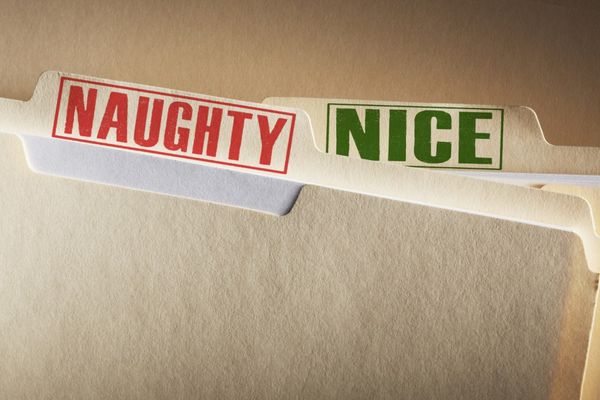3 Keys to Get Approved for Credit Card Offers From Chase & Other Banks
Signing up for credit cards through partner links earns us a commission. Terms apply to the offers listed on this page. Here’s our full advertising policy: How we make money.
Update: One or more card offers in this post are no longer available. Check our Hot Deals for the latest offers. I previously mentioned that Chase has once again changed their credit card approval policies. This is meant to discourage folks who apply for cards strictly for the sign-up bonus then cancel right away.
I’ll show you how keep it nice with Chase and other banks!
What Are the New Rules From Chase?
A few months ago Chase changed its credit card approval policy. And while they didn’t officially announce these changes in writing, many readers were told they wouldn’t be approved for a new Chase card if they had ~5+ applications with ANY bank in the last 24 months. This rule seems to vary by individual and there are some exceptions.
Then last week, I noticed some new wording in the terms & conditions for Chase Ultimate Rewards points cards:
Chase cardmembers who currently have or have had a Chase credit card in any Rewards Program associated with this offer, may not be eligible for a second Chase credit card in the same Rewards Program.Chase cardmembers currently receiving promotional pricing, or Chase cardmembers with a history of only using their current or prior Chase card for promotional pricing offers, are not eligible for a second Chase credit card with promotional pricing.
So Chase wants to avoid giving new cards to folks who earn the sign-up bonus and never use the card again.
How to Stay on the Bank’s Good Side to Earn More Miles & Points!
Here are tips to help keep Chase and other banks from labeling you as a bad customer.
1. Evaluate Your New Card for at Least ~10 Months
Banks offer sign-up bonuses to encourage you to try their cards. So they don’t like it when you earn the sign-up bonus and cancel the card right away. This could make the bank decide you aren’t a profitable customer.

I like to evaluate a card for ~10 months to determine if it’s worth paying the annual fee.
2. Use Your Card
Instead of using your card to meet the minimum spending requirements then sticking it in your sock drawer, take advantage of the other benefits!
Many cards come with bonus categories that can help you earn lots of points on your everyday spending. And there are often other perks like free checked bags, priority boarding, and price protection.

We all know banks are a business and their main concern is NOT giving us free travel. (But we’ll take it! 😉 ) They pay for airline & hotel points to give us in the hopes that we’ll use their cards for all sorts of purchases.
Not only do credit card companies make money from interest payments (don’t get in this hobby if you’re unable to pay your bills on-time!), but they also profit each time you use your card at stores by earning a percentage of the sale.
For many folks, it’s a win-win. Because you’re using the card for purchases you’d make anyway. And earning points in the process. Meanwhile, the bank earns their fees each time you swipe the card.
3. Get a NO Annual Fee Card
Everyone should consider a NO annual fee card because you never have to cancel! This helps you build a long-term relationship with the bank.
I have a number of annual fee cards as well. But holding onto most no-annual-fee cards year after year is a no-brainer. And it can improve your credit score because 15% of your score is determined by your length of credit history.

Two Cards That Make It Easy to Build a Lasting Relationship With Chase
Link: Chase Freedom – 10,000 Point Sign-Up Bonus ($100)
Link: My Review of Chase Freedom
Link: Chase Ink Business Cash Credit Card – 30,000 Point Sign-Up Bonus ($300)
Link: My Review of Chase Ink Cash
Both the Chase Freedom and Ink Cash cards come with NO annual fee. You never have to cancel because it doesn’t cost anything to keep these cards in your wallet.
You can currently earn 10,000 Chase Ultimate Rewards points ($100) when you sign-up for the Chase Freedom card and spend $500 on purchases within the 1st 3 months of opening your account.
And when you sign-up for the Chase Ink Cash small business card and spend $3,000 on purchases within the 1st 3 months, you’ll earn an increased bonus of 30,000 Chase Ultimate Rewards points ($300).
The Chase Ink Cash is a small business card, but you do NOT need a multi-million dollar company to qualify. Even part-time for-profit activities could get you approved.
Note: To open a small business card like the Chase Ink Cash, you do NOT need an Employer Identification Number. If you’re applying as a sole proprietorship, you can use your social security number.Plus, both of these cards give you excellent reasons to keep using them for your everyday spending!
With the Chase Freedom you’ll get:
- 5X Chase Ultimate Rewards points (on up to $1,500 in spending) in rotating categories each quarter. For example, next quarter you can earn the bonus for making purchases at Amazon.
- 2,500 Chase Ultimate Rewards bonus points (worth $25) for your 1st authorized user who makes a purchase within this same 3-month period
And with the Chase Ink Cash you can take advantage of perks like:
- 5X Chase Ultimate Rewards points per $1 you spend (5% cash back) on the 1st $25,000 (combined) spent per year at office supply stores and on cell phone, landline, internet, and cable TV services
- 2X Chase Ultimate Rewards points points per $1 you spend (2% cash back) on the 1st $25,000 (combined) spent per year at gas stations and restaurants
- Primary auto rental insurance (CDW) when renting for business purposes, plus purchase and extended warranty protection
So you can earn lots of points by using these cards in 5X points categories. And what I love about Chase Ultimate Rewards points is they are flexible!
If you also have the Chase Ink Bold, Chase Sapphire Preferred, or Chase Ink Plus cards, you can transfer Chase Ultimate Rewards points earned from the Chase Freedom and Chase Ink Cash to travel partners like Hyatt, Southwest, and United Airlines.Bottom Line
It’s important to build a positive relationship with banks like Chase, so you can continue earning miles and points with their credit cards.
Chase recently changed their rules to make it more difficult for folks who stop using or cancel their cards after they earn the sign-up bonus. You can let card issuers know you’re a valuable customer by:
- Hanging onto a card for at least ~10 months to determine if it’s worth keeping
- Using the card for more than just the minimum spending
- Signing-up for a NO annual fee card that will help you build a history with the bank
The Chase Freedom and Chase Ink Cash are excellent cards to use and keep long-term, making Chase more willing to approve you for new cards in the future.
These cards are even better when you have the Chase Sapphire Preferred or Ink Plus. Because those 2 cards allow you to transfer all your Chase Ultimate Rewards points (even those earned with the Chase Freedom & Ink Cash) to partners like United Airlines and Hyatt for Big Travel!
Editorial Note: We're the Million Mile Secrets team. And we're proud of our content, opinions and analysis, and of our reader's comments. These haven’t been reviewed, approved or endorsed by any of the airlines, hotels, or credit card issuers which we often write about. And that’s just how we like it! :)






Join the Discussion!